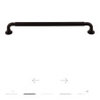S/O - Is 620 BTU 'too much' for true simmer?
eleena
12 years ago
Featured Answer
Comments (12)
foodonastump
12 years agoeleena
12 years agoRelated Professionals
Albany Kitchen & Bathroom Designers · Cuyahoga Falls Kitchen & Bathroom Designers · Lockport Kitchen & Bathroom Designers · Manchester Kitchen & Bathroom Designers · Ossining Kitchen & Bathroom Designers · Williamstown Kitchen & Bathroom Designers · Feasterville Trevose Kitchen & Bathroom Remodelers · Hopewell Kitchen & Bathroom Remodelers · Glen Carbon Kitchen & Bathroom Remodelers · Honolulu Kitchen & Bathroom Remodelers · Lomita Kitchen & Bathroom Remodelers · Paducah Kitchen & Bathroom Remodelers · Westchester Kitchen & Bathroom Remodelers · Cranford Cabinets & Cabinetry · Worcester Plumberscooksnsews
12 years agobrickeyee
12 years agorococogurl
12 years agoalexrander
12 years agofoodonastump
12 years agorococogurl
12 years agogregincal
12 years agoeleena
12 years agowekick
12 years ago
Related Stories

DECORATING GUIDES28 Design Ideas Coming to Homes Near You in 2017
Set to go big: Satin brass, voice assistants, vanity conversions, spring green and more
Full StorySponsored
Your Custom Bath Designers & Remodelers in Columbus I 10X Best Houzz
More Discussions







Nunyabiz1